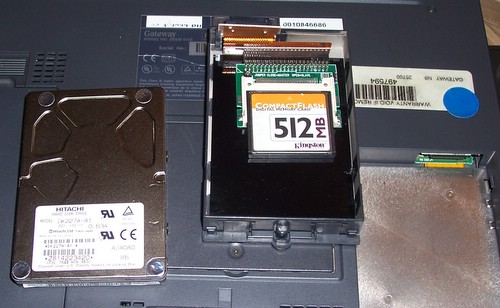[May 2014 – I can no longer recommend NCF as an ISP, please see the comments on the post for a link to an updated article]
The National Captial Freenet (NCF) is the 3rd ISP I’ve had high speed service from. Originally not having cable, I chose the Digital Subscriber Line (DSL) solution and went with Bell who provided my phone service. I might still be with them had it not been for Magma changing the rules on their dial up email account causing my @magma.ca address to expire, so switching to Magma (which was bought by Primus) for highspeed allowed me to keep my email address active. I don’t have much good to say about Primus.
With Bell, I was stuck on the 1Meg Nortel modem for a long time. My neighbourhood had been upgraded to use the newer higher speeds, but due to my ignorance (and Bell’s lack of information) I kept paying the same premium cost and getting low speed. Until I found out things had been better for many of my friends on DSL and called Bell to upgrade. It was a free upgrade, but annoying that it took me calling to get it to happen – I also had some interruption in service in the switch-over.
Calling Bell customer service was always frustrating, you had to run through the standard script – only to get yourself passed along to the next level where you might get someone more informed. I had an intermittent problem on the line and it was impossible to get help from them.
When I moved to Magma, the switch was smooth on their end. Bell continued to charge me for my DSL line for a couple of extra months, even though I wasn’t using their services. A huge thumbs down on Bell’s billing department.
Magma was a great company, and using their technical support I was able to get my intermittent line issues sorted out and fixed. Sadly, now owned by Primus there is in my experience terrible customer support. As a Magma customer I was grandfathered over to Primus, but apparently didn’t have full rights as a Primus customers (my customer ID wasn’t even a real Primus one). After a 20+ minute wait on hold just to talk to someone, I ended up in a frustrating conversation which took at least another 20 minutes to determine they couldn’t give me the service I wanted (DSL + static IP) at a competitive price.
Ages ago, my Dad had pointed me at NCF offering high speed at a very reasonable rate. I probably should have made the switch a long time ago, but I convinced myself into thinking that maintaining my email identity @magma was worth the extra cost. Ken had also had some success with Magma as an ISP, but I suspect my recent success moving away from them will help convince him to make the leap too.
Signing up with NCF is done online, similar to many ISPs today. They do support switching from another ISP and their website recommends a week or two of overlap to avoid losing service. I cut things a bit fine, but the switch-over looks like it has gone ok (knock on wood). There was a small mess up with the start of service date, to which I got a fairly detailed email reply promptly – included in that note was the line “any further questions, just give us a call” followed by the office number. On a whim, I dialed it up to check on one more detail – and was astounded to hit “0” and almost immediately talk to someone. Better still, they knew what they were doing – and could answer my question right then and there.
As I already own a DSL modem and line filters etc. The only thing I needed from them was service. I was able to switch over before my Primus account had expired, and today marks the official start of my NCF service. When I initially switched (June 25th) I did some speedtests to see how things were. On Primus/Magma my speeds were consistently 2500kb/s down and 650kb/s up. On the 26th, switching to my new DSL login on NCF – I wasn’t surprised to see the same numbers. Today I checked my speed again. WOW! 4400kb/s down and 650kb/s up. Maybe its a fluke, but I’m hoping it isn’t.
Summary – NCF offers DSL service for $29.95 a month, no contract. There is no speed cap, so up to 5 Mb/s down, 800 Kb/s up (max). They offer static IPs for additional cost. It is run by people who know what they are doing. This not-for-profit organization deserves your business.

